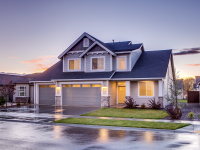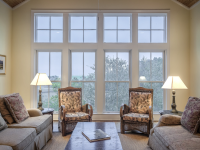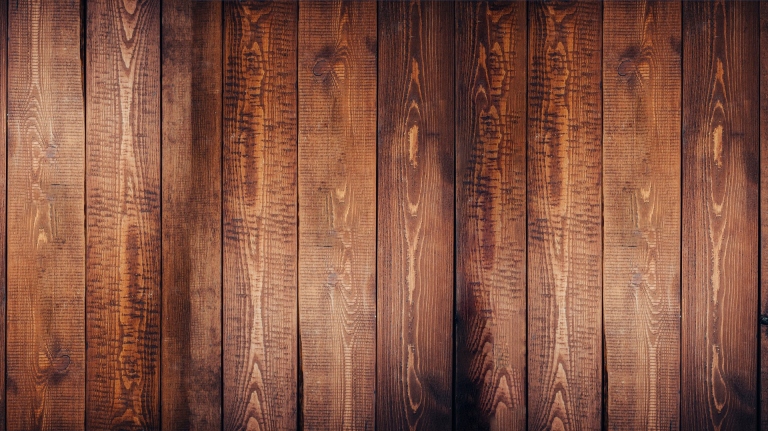Living in a wooden home is a dream for a lot of people. The material is highly aesthetic, and it is a natural material. Being in touch with natural materials is good for your psyche, in general. Moreover, why not have your home have a theme of a forest lodge? Then again, a lot of people dream of owning a forest lodge as a vacation spot.
Other than this, timber is a renewable material. It takes a lot less to produce it, and its ecological impact is a lot higher than when using some artificial materials. All of this makes it eco-friendly. Not to mention that it’s a traditional home-building material, which is what makes it appealing to people with a preference for pre-industrial living.
The problem is that timber, to a lot of people, seems imperfect as a construction material. People suspect that plank roofs can’t possibly be leak-proof, that wooden walls can’t possibly have a sufficient level of insulation, and that wood is always highly-flammable. Fortunately, none of the three is true.
This last is particularly concerning, seeing as how it puts the entire family at risk. With that in mind and without further ado, here are a couple of things you need to do in order to make your wood heat resistant and keep your property safe.
Naturally Heat-Resistant Wood
When you say wood, every speaker has an idea of what you’re talking about, but the difference between the two types of wood (oak, pine, and cedar, for instance) is astronomical. Amongst all the differences, there’s also their level of fire resistance. These classes are separated into three categories:
- Class A (or class I) is the most resistant of them all. Here, it will take at least 30 minutes to ignite them, and even then, the flame spread index will be as low as 25 or less.
- Class B (or class II) has a flame spread index lower than 75. Keep in mind that if you apply a fire-resistant coating to this class, you can effectively upgrade it to Class-A-like material.
- Class C (or class III) is obviously the one having the lowest level of heat resistance. The flame spread index here is 200 or less. Naturally, there’s more flammable wood, but this is never used in furniture- or home-construction processes.
Now, when it comes to the species of wood ironwood/hardwood has the highest level of heat resistance (naturally). The best-known ironwoods are mahogany, oak, maple, and walnut. The thickness and density of these wood types ensure the highest possible level of resistance prior to applying any coating whatsoever.
Pick the Right Coating
The next thing you need to take into consideration is the choice of the right coating for heat resistance. Depending on the material that you’re approaching, you can pick either spray or wood paint.
A fire-retardant spray can be used on both wood and fabric. Moreover, it is classified as Class A, which means that it reduces the flame index spread to as little as 25 (or less) and makes the substance hard to ignite. Now, this is a relatively expensive solution, seeing as how you don’t dilute it but spray it directly. Seeing as how you’re working on large surfaces, it’s logical that you’ll go through a number of sprays before covering it all.
When it comes to the largest surfaces (like your wooden walls), other than just choosing a Class A wood, you also want to go for quality fire retardant paint. This way, you can provide the wood in question with about 60 minutes of protection from fire (provided that the wood is quite resistant to begin with). Just let that sink in. Sixty minutes of fire before your walls catch it. Chances are that you wouldn’t be safe even in a home made out of concrete.
Keep in mind that the thickness of the wood and the quality of your paintwork also need to be taken into account. Still, when compared to ordinary paint, the results are always quite impressive.
Manage Your Expectations (And Be Careful)
The last thing you need to understand is that while you can make a wooden surface/object more fire resistant, it will, eventually, burn. This is true even for Class A wood. However, given enough time and sufficient heat, even the materials that you would never expect this from, would eventually burn. To sum it up, you can never make wood completely fire resistant.
Also, in order to help your home become more heat resistant, it’s essential that you grow awareness of all the flammable items in your household. For instance, chances are that you had no idea that sugar and various cooking powders are highly flammable. Even when suspended in the air in the form of dust, they can catch fire, which poses another threat to your wooden surfaces (which should exist in abundance in your kitchen).
A lot of people heat orange peels in order to fill the home with this citrusy scent. However, what they don’t realize is that even the driest of orange peels contain tiny pockets filled with orange oil. This oil is highly flammable, and if wooden objects are nearby (non-coated Class B or Class C wood), you’re looking at a recipe for a disaster.
Hand sanitizers are another highly flammable substance, yet, more and more people prefer to clad their bathrooms in wood. This is a disaster just waiting to happen, seeing as how an electrical heater is becoming a standard in the majority of households. This is why it’s so important that you do everything you can to increase heat resistance or at least general awareness of the dangers in the area.
Consider Your Home’s Heating
Now, when talking about your home’s protection from heat, you also need to be mindful of the fire source. Where are you expecting it to come from?
- Do you expect a forest fire to spread to your area?
- Do you expect a lighting strike somewhere nearby?
- Or do you expect the heat to come from within?
In the majority of cases, it will be the latter, especially since the first two are legally characterized as “Act of God” accidents, which are observed differently even by the insurance companies.
When speaking about the last part, you need to start with electricity and check all your appliances, sockets, and your electrical grid, in general.
Next, you need to keep your home clean. A pile of rubbish, an oily spot on the floor, etc., can all serve as the fuel that will make the situation much worse rather quickly.
Third, you need to pay close attention to your own heat source. A wood-burning stove or a gas stove can be quite dangerous if you’re not careful. Moreover, they’re usually the main heat source in cabins and lodges, which are primarily made out of wood. This creates a vicious cycle of fire hazards that you should never underestimate. The way you use your heat and cooling systems at home makes more difference than you know.
All in all, you need to be extra careful when dealing with any kind of heat source, even if your home isn’t made of wood.
In Conclusion
In the end, it all comes down to a couple of simple truths. First, you can never make wood completely heat- and fire-resistant. No matter what you do, this is always going to be a hazard. However, with the right choice of wood, adequate coating, and awareness of where the hazards are coming from, you can virtually eliminate the risk. This way, you can enjoy the aesthetic of having a fully wood-cladded household while being able to rest easy, even with an old-school heat source. It’s a win-win scenario, but it requires quite a bit of work.


















